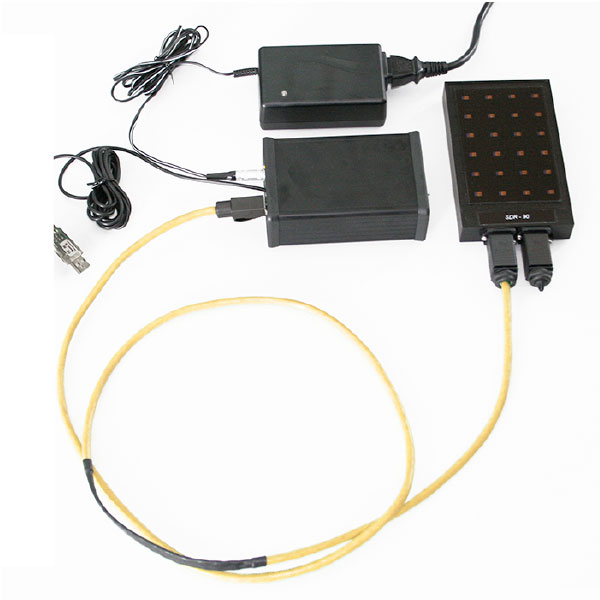Sensor Dish Reader

The SDR SensorDish® Reader is a small 24-channel reader for non-invasive detection of oxygen and pH in multidishes (SensorDishes®). These contain a sensor spot at the bottom of each well. They are read out non-invasively through the transparent bottom. SensorDishes® for oxygen (OxoDish®) and pH (HydroDish®) are available in the 24-well and 6-well format. Deep well plates with integrated oxygen sensors (OxoDish®-DW) allow measurements in shaken cultures. Read out of oxygen sensors integrated in glass vessels for respiration monitoring is also possible. The SensorDish® Reader can be used in incubators and on shakers and is thus the ideal tool for cell cultivation.
Features
- Parallel online monitoring in disposable 24- or 6-well plates.
- Non-invasive & non-destructive measurement.
- Deep well plates (for O2 monitoring in shaken cultures) & low well plates available.
- Pre-calibrated.
- For use in incubators and on shakers.
- Optional extension for monitoring of up to 240 samples.
Applications
- Non-Invasive Culture Monitoring of pH and Oxygen.
- Measurement under real conditions in incubator atmosphere.
- Low well & deep well plates.
- Pre-calibrated & ready-to-use.
- For microbial & cell culture.
The Smart Measurement Method
The Smart Measurement Method. A sensor spot is fixed at the bottom of each well of the multidish. The sensor spot contains a luminescent dye. It is excited by the SensorDish® Reader placed below the multidish, and its luminescence lifetime is detected non-invasively through the transparent bottom. The luminescence lifetime of the dye depends on the oxygen partial pressure (OxoDish®) and the pH of the sample (HydroDish®), respectively. It is converted to oxygen and pH values by the software without plate calibration by the user.
The SDR Software
Up to 10 SDRs are controlled by the user-friendly software. Oxygen and pH kinetics are visualized in real-time during the entire cultivation. Features like different graphical representations, optical display of deviations from the set point, trend analysis and other mathematical calculations are integrated. Calibration data are uploaded conveniently from a file. Measured data can be exported to Excel® or ASCII for further evaluation.
Benefits
- Improved process monitoring and security
- Systematic optimization of culture parameters
- Enhanced culture quality and efficiency
- Real-time data acquisition indicates necessary medium changes instantly
- Easy scale-up for parallel processing of up to 240 samples
